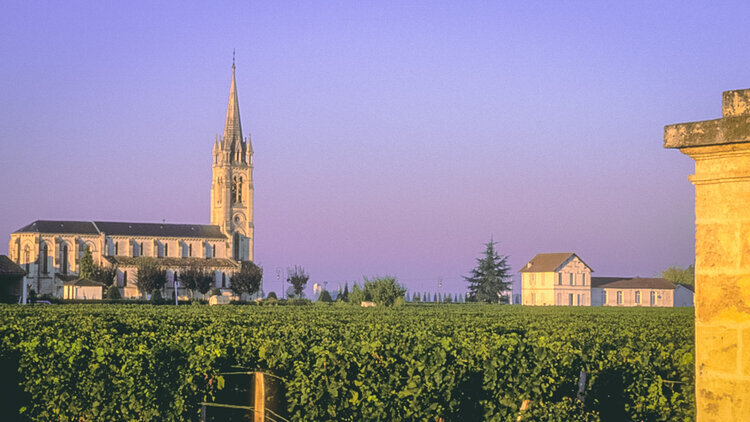Julien Miquel
Chief Wine Officer, Alti Wine Exchange
Today we’re going to look at the wines that command the highest prices and the highest prestige on the market coming from the right bank and to what makes them special.
Let’s focus for now on Pomerol & Saint-Emilion specifically before we look into the left bank and its 1855 Chateaus in future articles.
Learn about the Best Saint-Émilion & Pomerol Wines in Video
The Fine & Rare Wines from Pomerol & Saint-Émilion
If you look at a list of all the most expensive Bordeaux wines (see the full list further down below at the end of the article), you might be surprised to find out that they are not all classified Chateaus of the famous 1855 classification.
In fact, in the top 20 most expensive Bordeaux wines, about 7 wines are from the Right bank, wines from Saint-Emilion and Pomerol. Why is this? You may wonder.
Let’s break it down briefly. First of all, you have to know that when the Classification of the best wines from Bordeaux was ordered by Napoleon the Third in 1855. The wines from the right bank were not even considered in the ranking, because at the time, those wines weren’t considered as good and they weren’t traded internationally like those from the left bank.
Back then, wines from the right bank were considered relatively modest, while the great Chateaus of the left bank were already well established. But the quality and the reputation of Pomerol and Saint-Emilion has dramatically increased since, to the point that they are now some of the best, rarest and most age-worthy wines you can find from Bordeaux, often surpassing those of the left bank.
Church and vineyards in Pomerol.
What makes the Right Bank special?
From a pricing standpoint, Saint-Emilion wines, and even more so those of Pomerol, are rarer than those from the Left bank, simply because the estates are smaller there.
The very best Saint Emilions and Pomerols are made in very limited quantities, much smaller quantities than the large properties from Medoc, yet with an outstanding quality. Hence them commanding very high prices.
Some top properties in Pomerol cover no more than a few acres, like Le Pin for example with a vineyard surface area of 2.7 hectares or 6 acres only.
You’ve probably also heard that what distinguishes the wines from the Right Bank as opposed to those from the left bank, beyond the location, is that they are made with an emphasis on the Merlot and Cabernet Franc grapes as opposed to Cabernet Sauvignon on the left bank.
These lead to slightly different styles of red wines but also complex and immensely age-worthy wines. It is to be noted that wines from Merlot or Cabernet Franc of that quality level are much rarer around the world than high-end wines from Cabernet Sauvignon which can be found in other countries like in the United States. Virtually only Bordeaux, and perhaps a little bit of Tuscany and the Loire Valley as well, makes such fine wines from Merlot and Cabernet Franc, amplifying the unique and rare character of those wines.
In addition, both in Pomerol and in Saint-Emilion, the very best terroirs, the very best soils able to consistently make outstanding wines year after year, are in very small patches of land. In Saint-Emilion, one part of these exceptional terroirs is located on the limestone hill around the village which if you’ve ever been there you can tell is small.
Another fantastic but small area is precisely where the appellation of Pomerol and Saint-Emilion meet. This is where you’ll find the highest concentration of high-end Bordeaux properties, around Chateau Cheval Blanc, Angélus or Pétrus.
This naturally leads us indeed to talk about to which chateaus are the very best on the Right Bank.
The Most Expensive Saint-Emilion & Pomerol Wines?
In Saint-Emilion, the most reputable Chateaus are listed in the 2012 Classification with the very best being titled Premier Grand Cru classés of the A category.
There are 4 of those that are all among the most expensive Saint-Emilions, that’s Château Cheval Blanc, Château Ausone, Château Pavie, and Château Angélus.
Other top names in Saint-Emilion include La Mondotte, Figeac or Tertre-Roteboeuf.
Pomerol doesn’t have any classification system. Pricing makes the classification here.
Properties in Pomerol are very small and the terroir of Pomerol is extremely rare, so wines are expensive.
Some of the top names in Pomerol include Pétrus of course, which has been pretty much THE most expensive Bordeaux wine for decades now, commanding prices over $3000 a bottle.
Other top names among the most expensive wines in Pomerol include Le Pin and Chateau Lafleur, while there are also many prestigious names all over Pomerol, like those of Vieux Chateau Certain, La Violette, L’Eglise Client, L’Evangile, Trotanoy or la Conseillante.
In the next part of this 4-part article and video series about the fine & rare wines from Bordeaux, we’ll look at the top Chateaus from Medoc and the 1855 classification, with such prestigious investment grade wines as Chateau Margaux, Chateau Latour, Mouton and Lafite-Rothschild.
The Top 20 Most Expensive Bordeaux Wines:
1- Liber Pater, Graves
2- Pétrus, Pomerol
3- Le Pin, Pomerol
4- Chateau Lafite Rothschild, Pauillac
5- Chateau Haut-Brion Blanc, Péssac-Leognan
6- Chateau Latour, Pauillac
7- Chateau Lafleur, Pomerol
8- Chateau Ausone, Saint-Emilion
9- Chateau Margaux
10- Chateau Cheval Blanc, Saint-Emilion
11- Chateau Mouton Rothschild, Pauillac
12- Chateau Haut-Brion, Péssac-Leognan
13- Chateau La Mission Haut-Brion White, Pessac-Leognan
14- Chateau d’Yquem, Sauternes
15- Chateau La Mission Haut-Brion
16- Denis Dubourdieu Chateau Doisy-Daene L’Extravagant de Doisy-Daene, Sauternes
17- Chateau Angelus, Saint-Emilion
18- Chateau Pavie, Saint-Emilion
19- Chateau Lafite Rothschild Carruades de Lafite, Pauillac
20- Chateau Palmer, Margaux
You can consult the full list of wines referenced in the 2012 Classification of the wines from Saint-Emilion here.
***
Check more about Julien’s wine reviews here.
